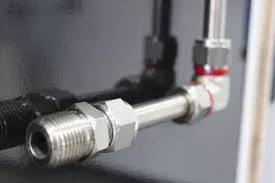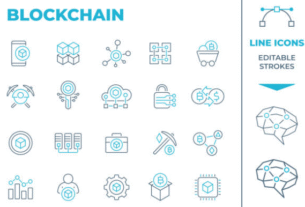Gas distribution networks form the backbone of energy infrastructure across Australian homes and businesses, with over 4.3 million residential connections recorded in 2024. Strict adherence to AS/NZS 5601.1:2022 codes isn’t just recommended – it’s legally enforced through state-based licensing systems like Victoria’s Energy Safe Victoria (ESV 3456-2024). This technical manual goes beyond basic compliance, addressing often-overlooked aspects like coastal corrosion patterns in Queensland and pressure differentials in multi-story Adelaide apartment complexes. Recent data from NSW Fair Trading shows 18% of gas-related incidents stem from improper fitting selection, making material knowledge a matter of public safety.
Materials Used in Gas Pipes
Gas Pipes and Fittings Selection criteria for pipeline materials extend beyond basic durability, requiring consideration of soil pH levels, thermal expansion coefficients, and jointing methods approved under Gas Technical Regulator (GTR) specifications.
1. Copper (Type B)
The go-to choice for 68% of Sydney metro installations, Type B copper must meet AS 1432 certification with wall thickness varying by application:
- 0.7mm for standard indoor runs
- 1.0mm for coastal regions (Newcastle to Gold Coast)
- 1.2mm when buried in acidic soils (pH <5.5)
2. Stainless Steel 316L
Mandatory for all commercial kitchens in Brisbane City Council areas, 316L grade demonstrates:
- Chloride stress corrosion cracking threshold: 60°C at 500ppm
- Minimum tensile strength: 515 MPa (AS 1528)
- Required bend radius: 4x OD for cold forming
3. Polyethylene (PE100-RC)
The 2024 update to AS/NZS 4645 mandates PE100-RC for underground LPG systems with:
- Slow Crack Growth Resistance >10,000hrs (ISO 13479)
- UV stabilizer content ≥2.5% carbon black
- Fusion temperature range: 210-230°C
4. Composite Aluminum (CSST)
Corrugated Stainless Steel Tubing requires:
- Arc fault protection (Clause 4.15 AS 5601)
- 600mm clearance from electrical conduits
- Max continuous length: 12m (residential), 6m (commercial)
| Material | Pressure Rating | Temp Range | Certifications Needed |
| Copper Type B | 200 kPa | -10°C to +80°C | WaterMark Level 1 |
| 316L Stainless | 1000 kPa | -40°C to +150°C | ISO 15649 Class 3 |
| PE100-RC | 125 kPa | -30°C to +40°C | APGA PE Pipe Systems License |
| CSST | 350 kPa | -30°C to +100°C | IAPMO R&T Listing |
Types of Gas Fittings: Connection Technologies
Modern gas systems employ seven primary jointing methods, each with specific torque requirements and inspection protocols:
1. Flared Joints (AS 4041)
- 45° flare angle ±1° tolerance
- Must use ANSI B74.3 compliant dies
- Torque values: 25-35 Nm for 15mm OD
2. Compression Fittings
- Ferrules require 1.5 full turns past hand-tight
- Annual re-torquing mandated in WA
- Prohibited in concealed spaces (QLD Regulation 2023)
3. Brazed Connections
- BCuP-6 filler rods mandatory
- Nitrogen purge during heating
- Post-installation pressure test at 1.5x MAOP
4. Mechanical Couplings
- TÜV SÜD GS-3456 certification
- Maximum angular deflection: 3°
- Require annual leak checks
Installation Standards in Australia
Compliance Matrix by State
Each jurisdiction enforces unique amendments to AS/NZS 5601.1:
| State | Depth Requirements | Test Pressure | Inspector License |
| NSW | 600mm ±50mm | 150% MAOP | Fair Trading GWL-2025 |
| VIC | 650mm | 200kPa minimum | ESV Gas Work Passport |
| QLD | 550mm + marker tape | 300kPa/5min | QBCC Gas Cert III |
| SA | 700mm (urban) | 1.25x design PS | OCBA License Class B |
Critical installation thresholds:
- 0.5mm maximum ovality in bent pipes
- 3mm/m slope toward drain points
- 50mm clearance from electrical services
Safety Considerations
Leak Prevention Protocols
2025 National Gas Amendment (NGA-2456) requires:
- Electronic leak detection (0.25% LEL sensitivity)
- Annual combustion analysis (CO/CO₂ ratio <0.04)
- Emergency shutoff valves within 3m of appliances
Fire safety measures now mandate:
- 30-minute fire rated enclosures for risers
- Intumescent wraps in high-rise buildings
- 500mm separation from HVAC ducts
Advances in Gas Systems Technology
Smart Regulation Systems
Modern installations integrate IoT-enabled components:
- Rotork CG5 actuators with MODBUS RTU
- Endress+Hauser Promass flow meters (±0.2% accuracy)
- Siemens SITRANS LS200 leak detectors
Transition timelines:
- POL connector phase-out: Complete by July 2025
- LCC27 rollout: 80% completion target for 2026
- Smart meter mandates: All new builds from Jan 2025
Conclusion
Maintaining gas system integrity requires understanding both legacy practices and emerging technologies. With the Australian Energy Market Operator projecting 12% growth in gas network connections by 2030, professionals must stay current through:
- Quarterly AS/NZS standard updates
- TAFE NSW GASFIT courses (CPCGS3063)
- Manufacturer training (e.g., Victaulic VF-345)
Always verify component certifications through:
- WaterMark Database (WM-12345)
- Global-Mark Approval System
- IAPMO R&T Listing Directory




